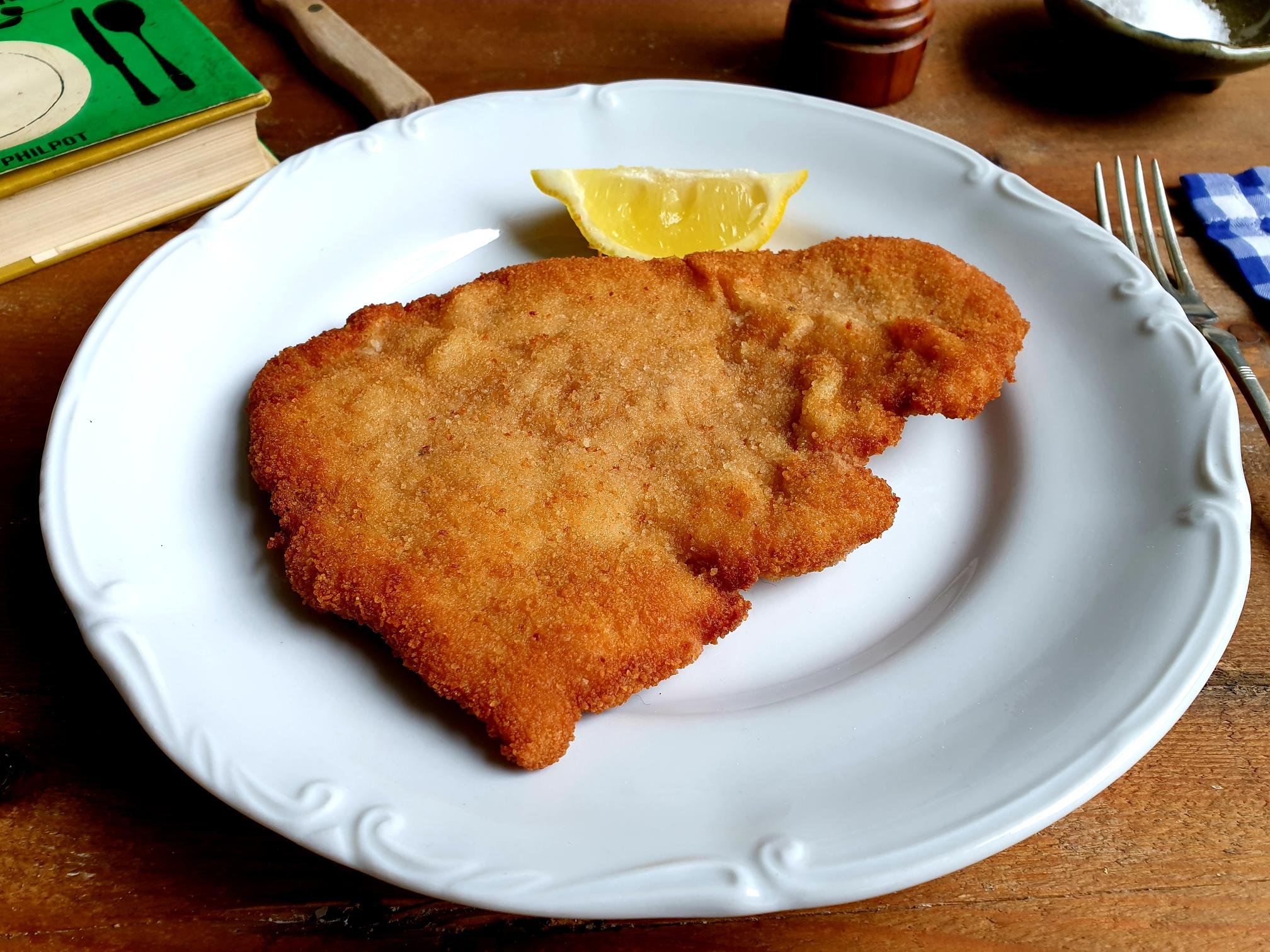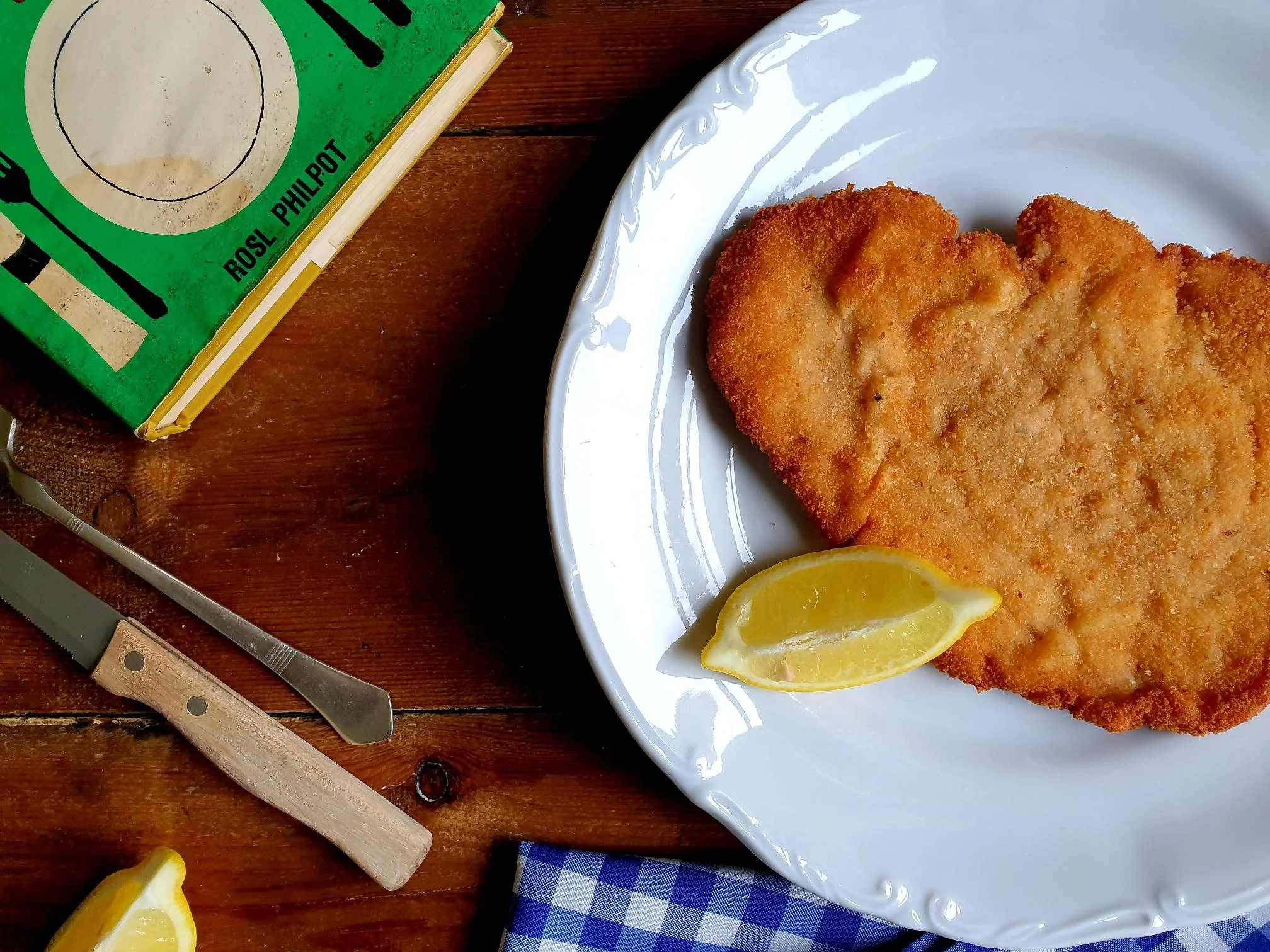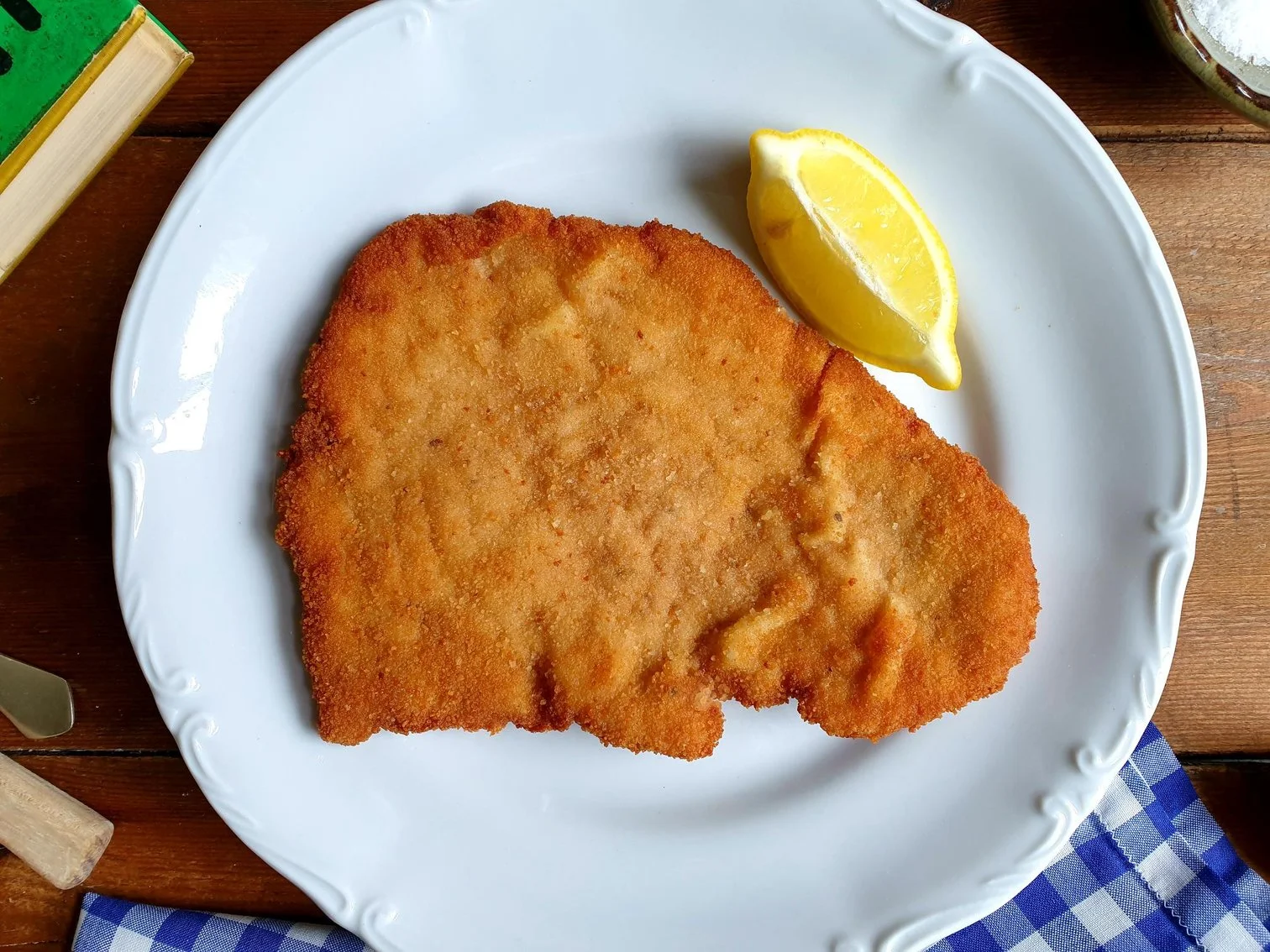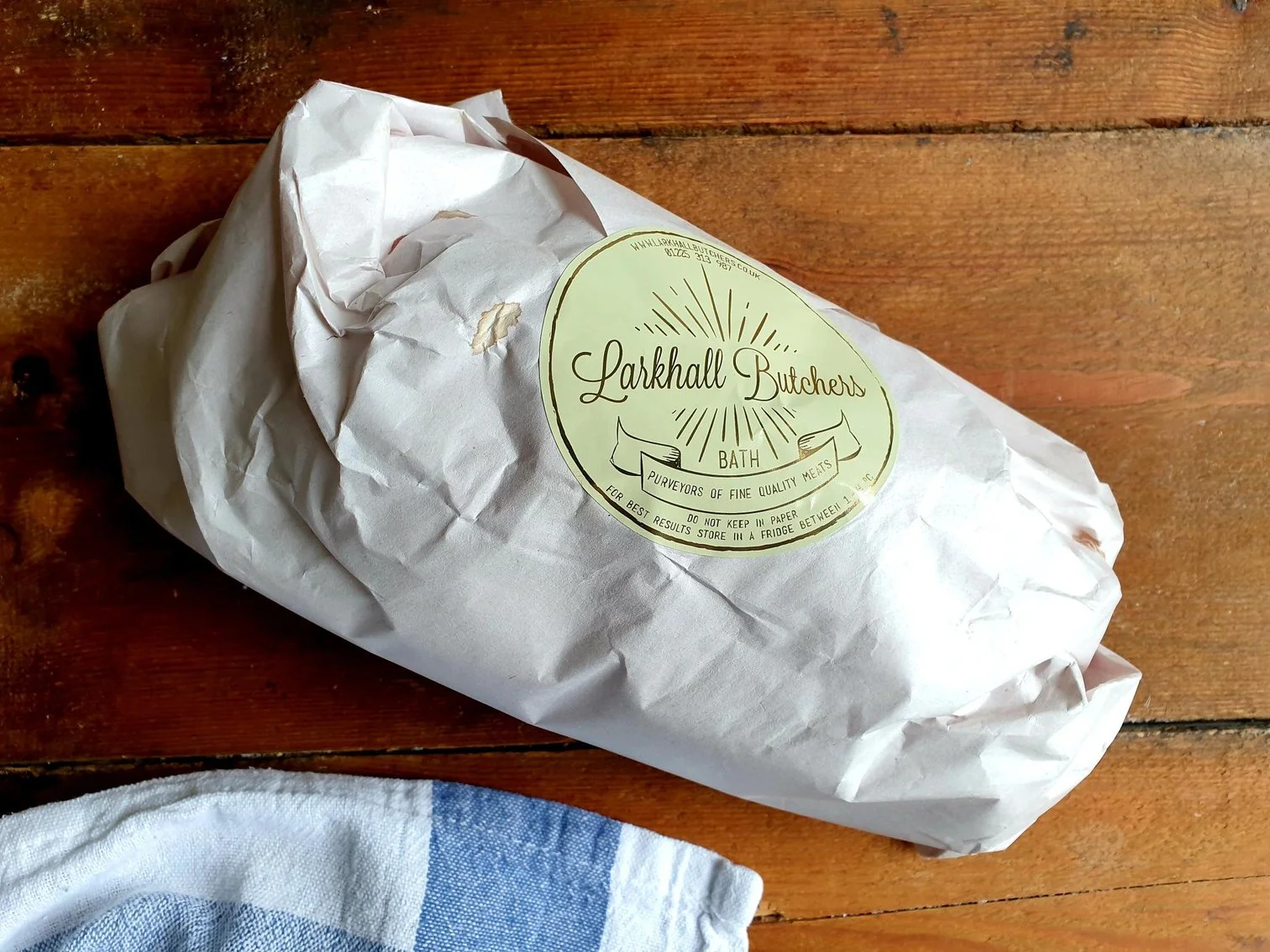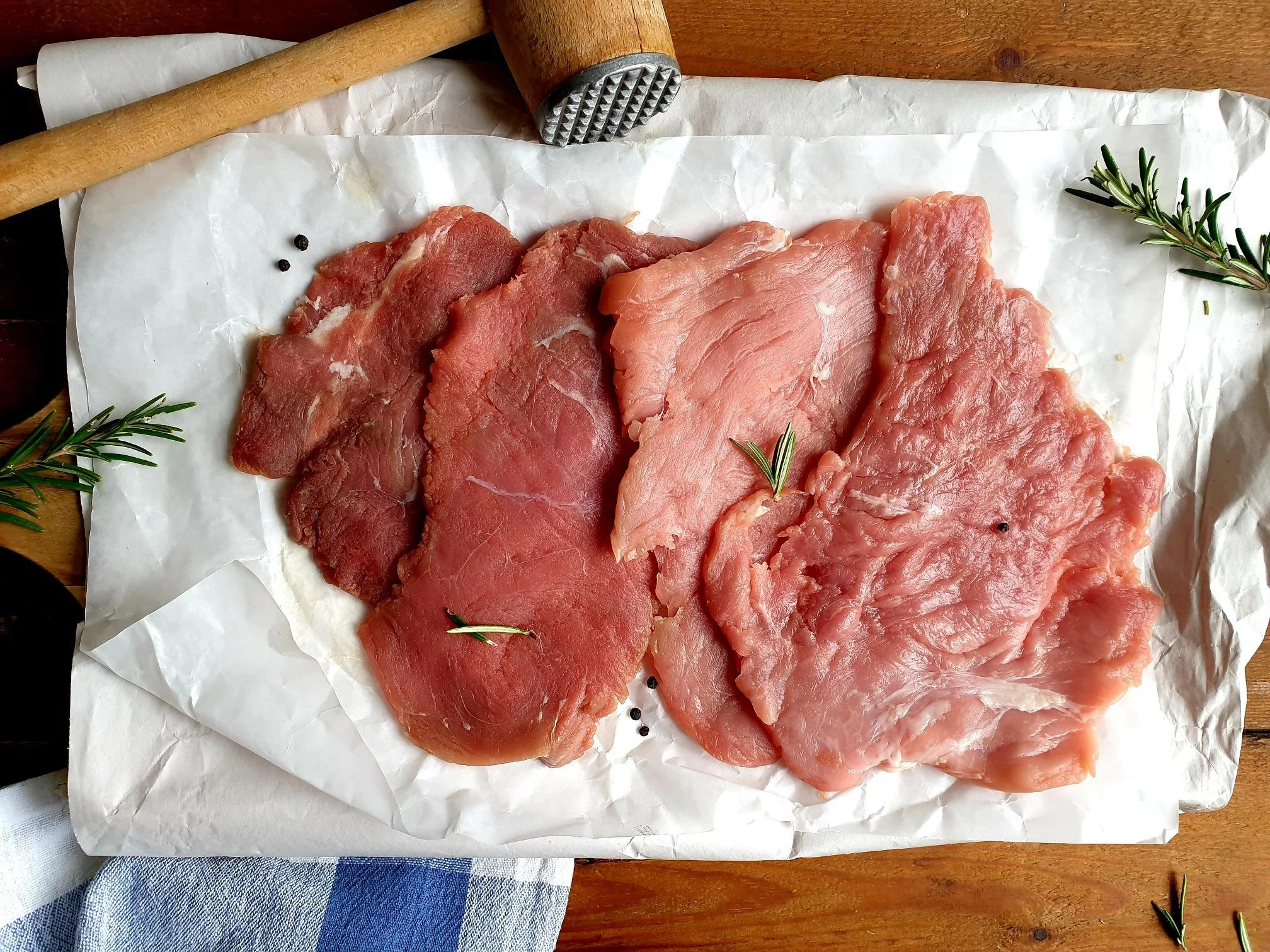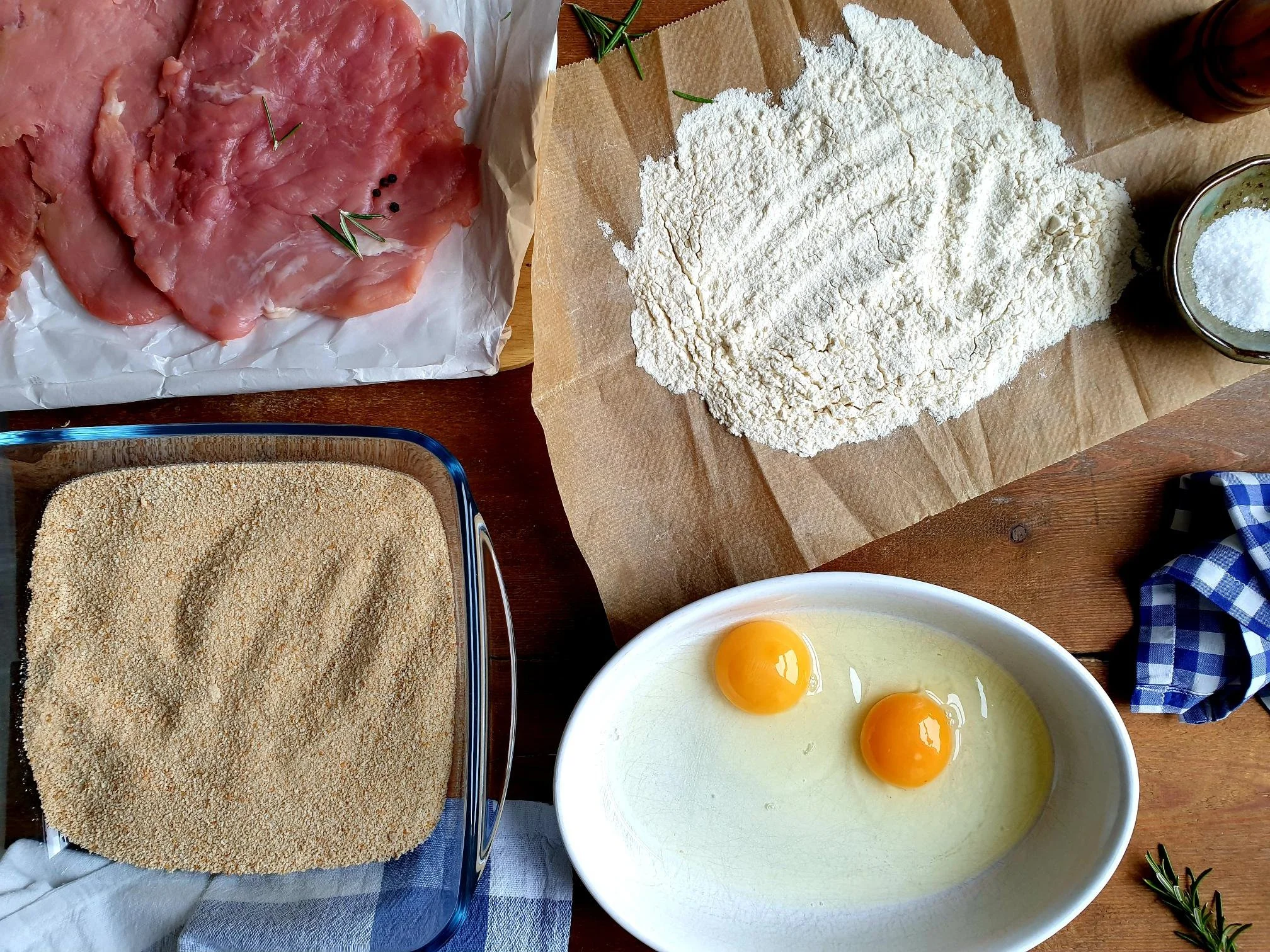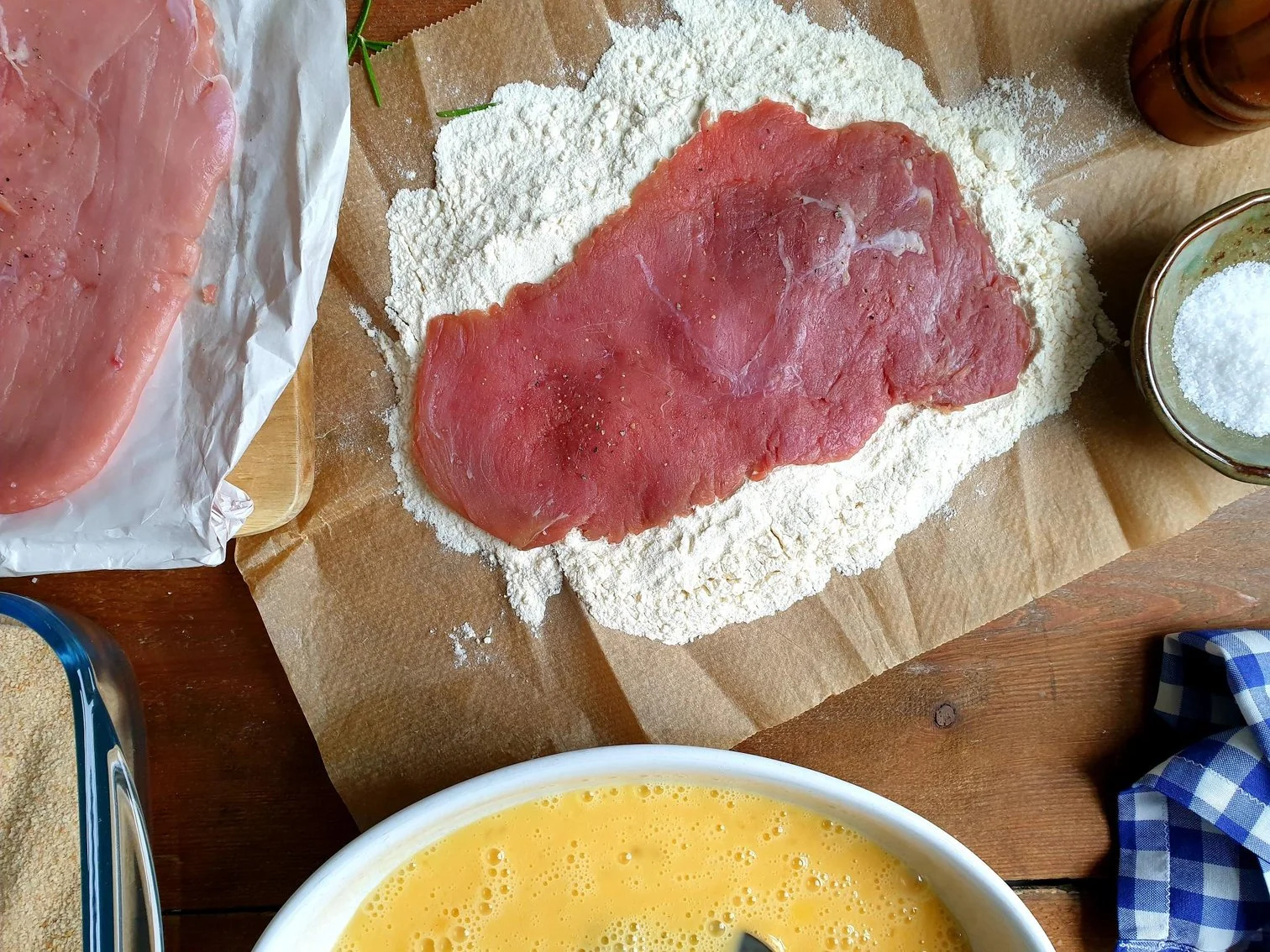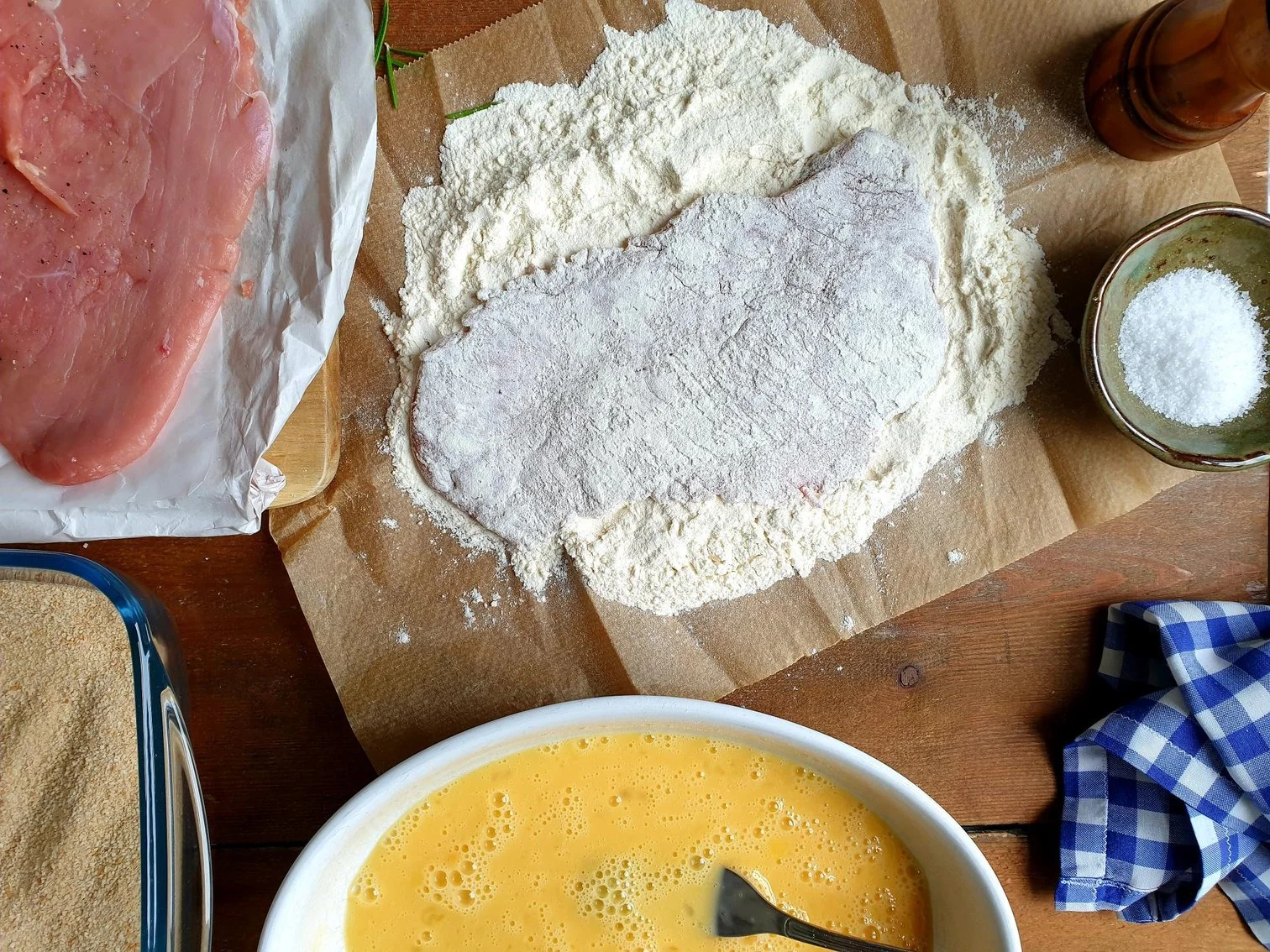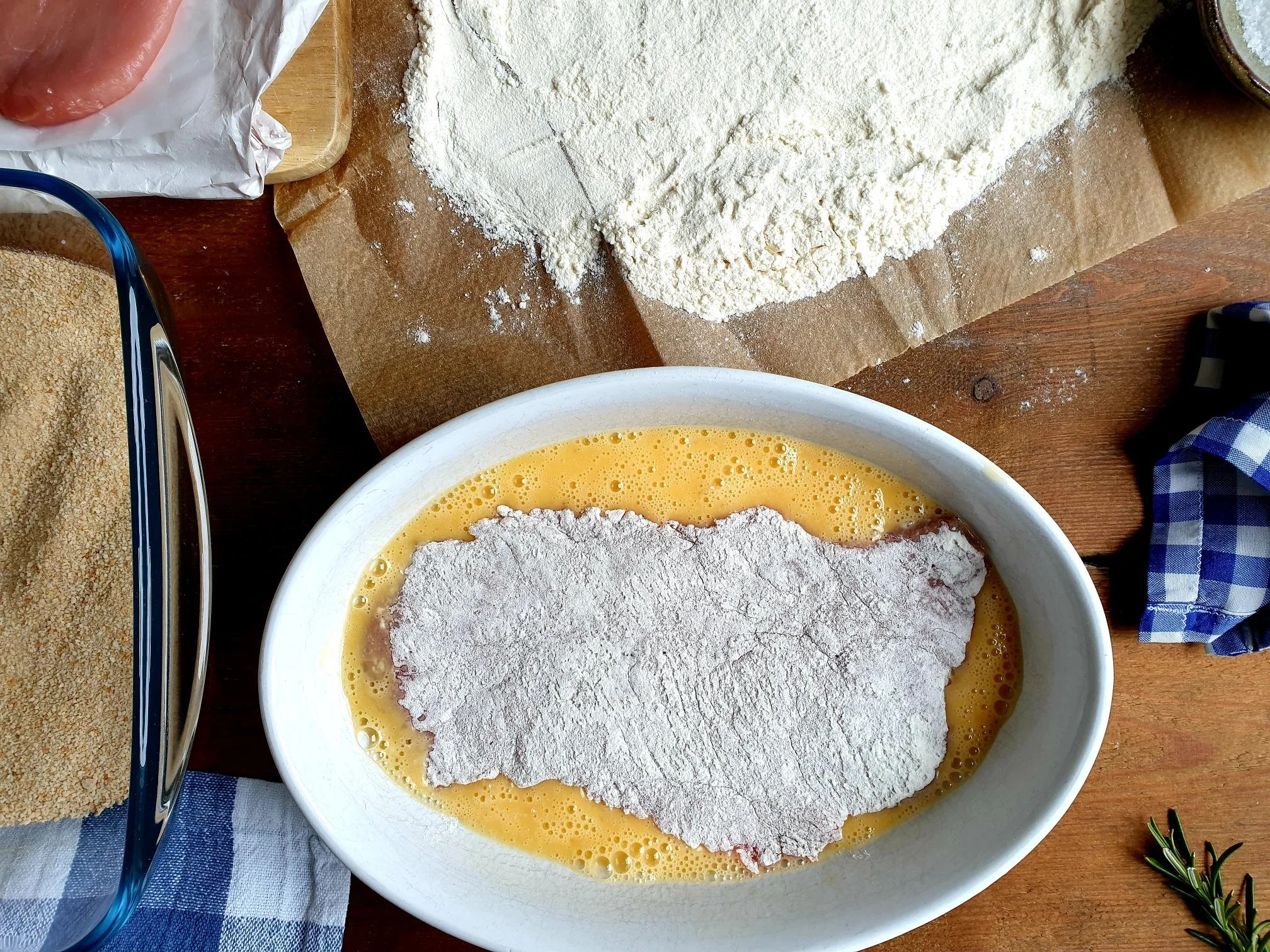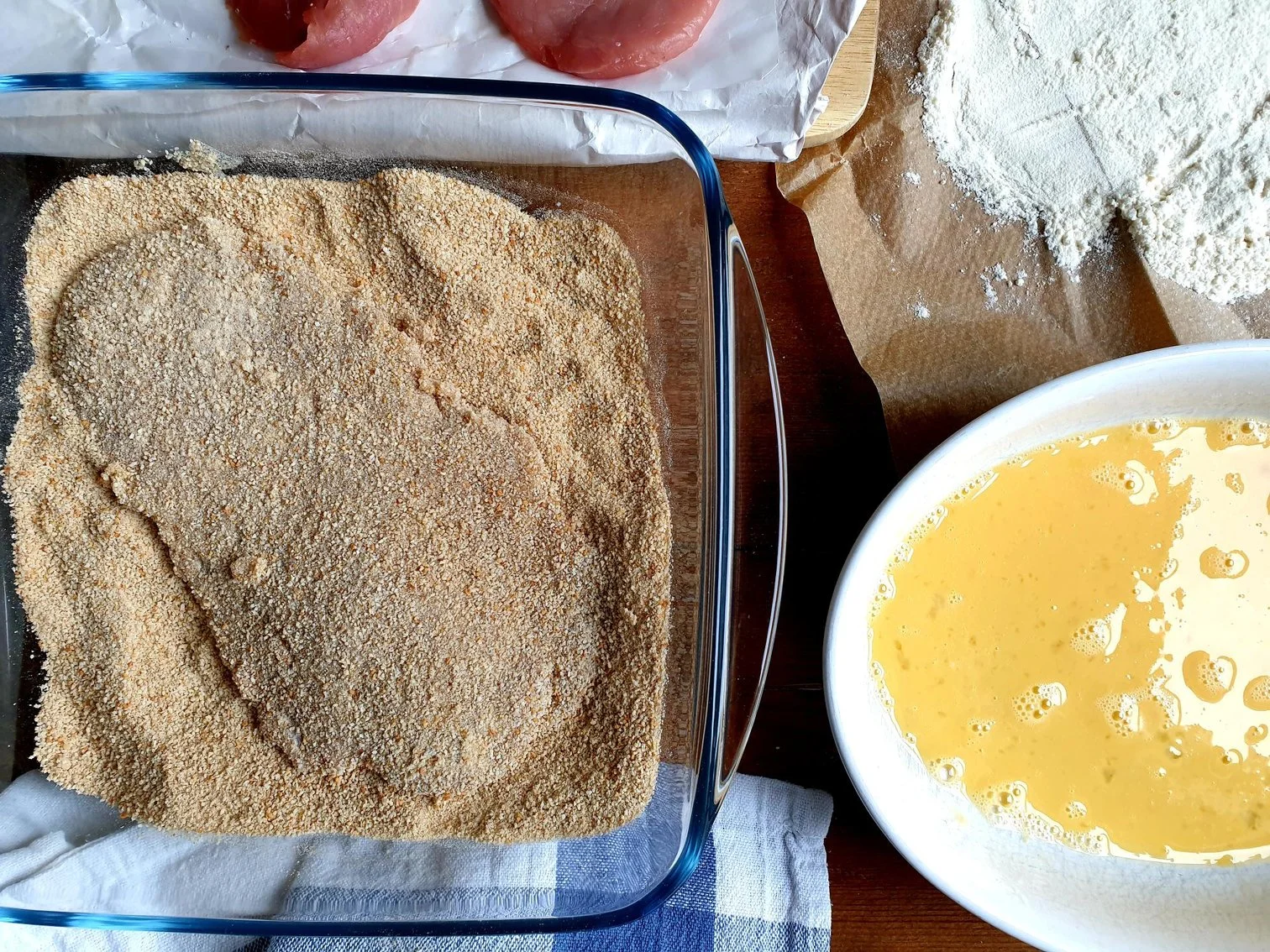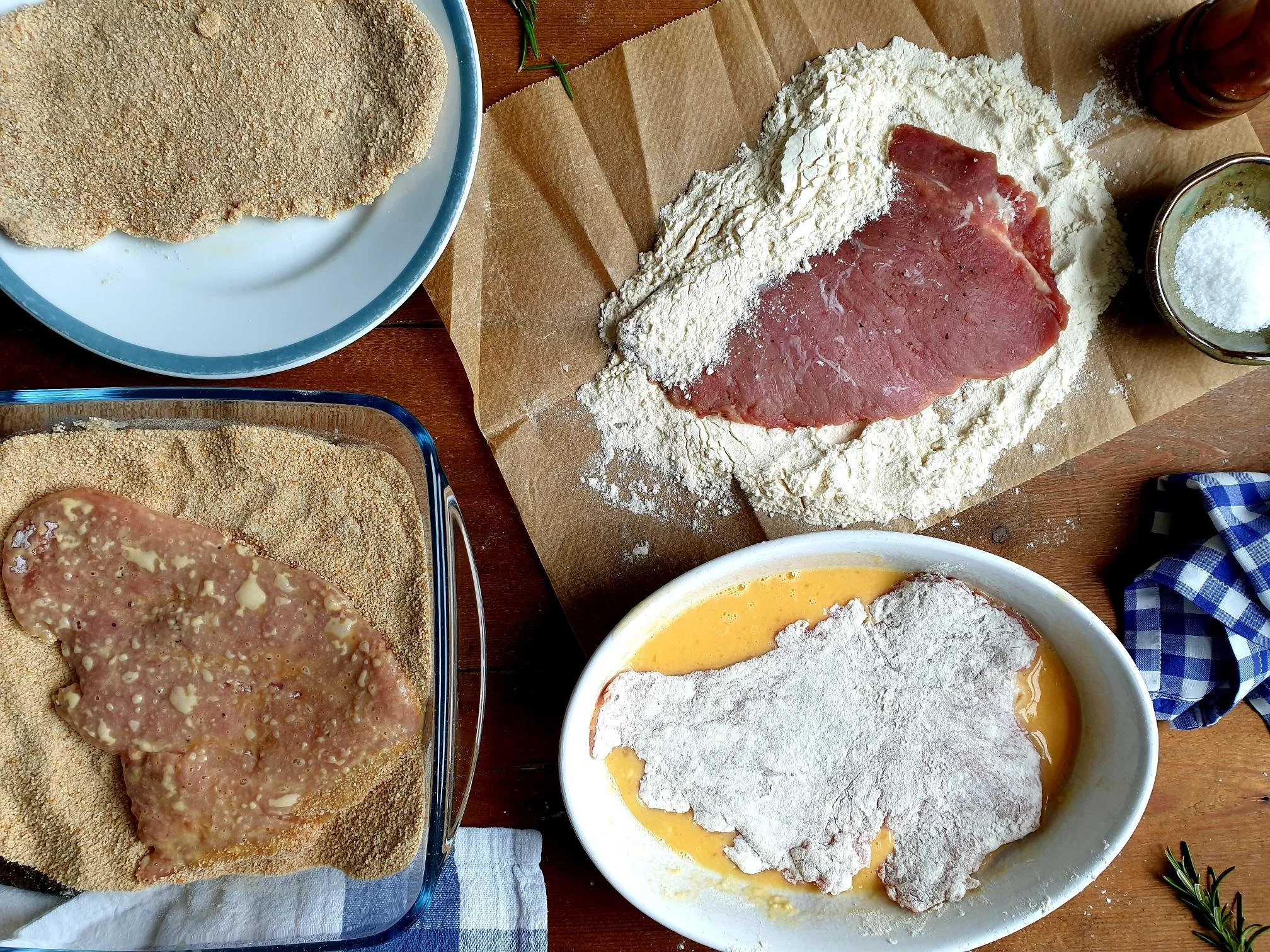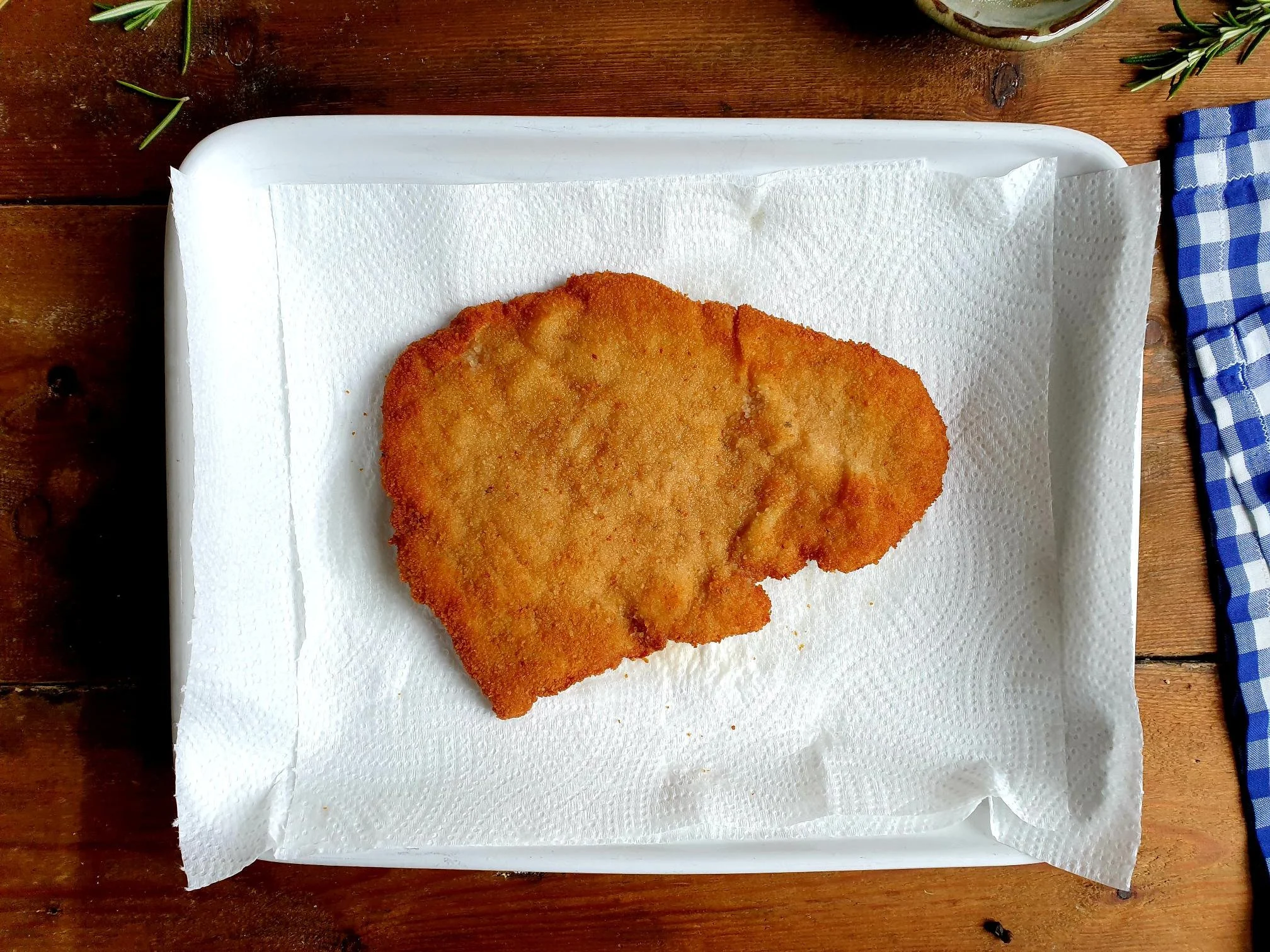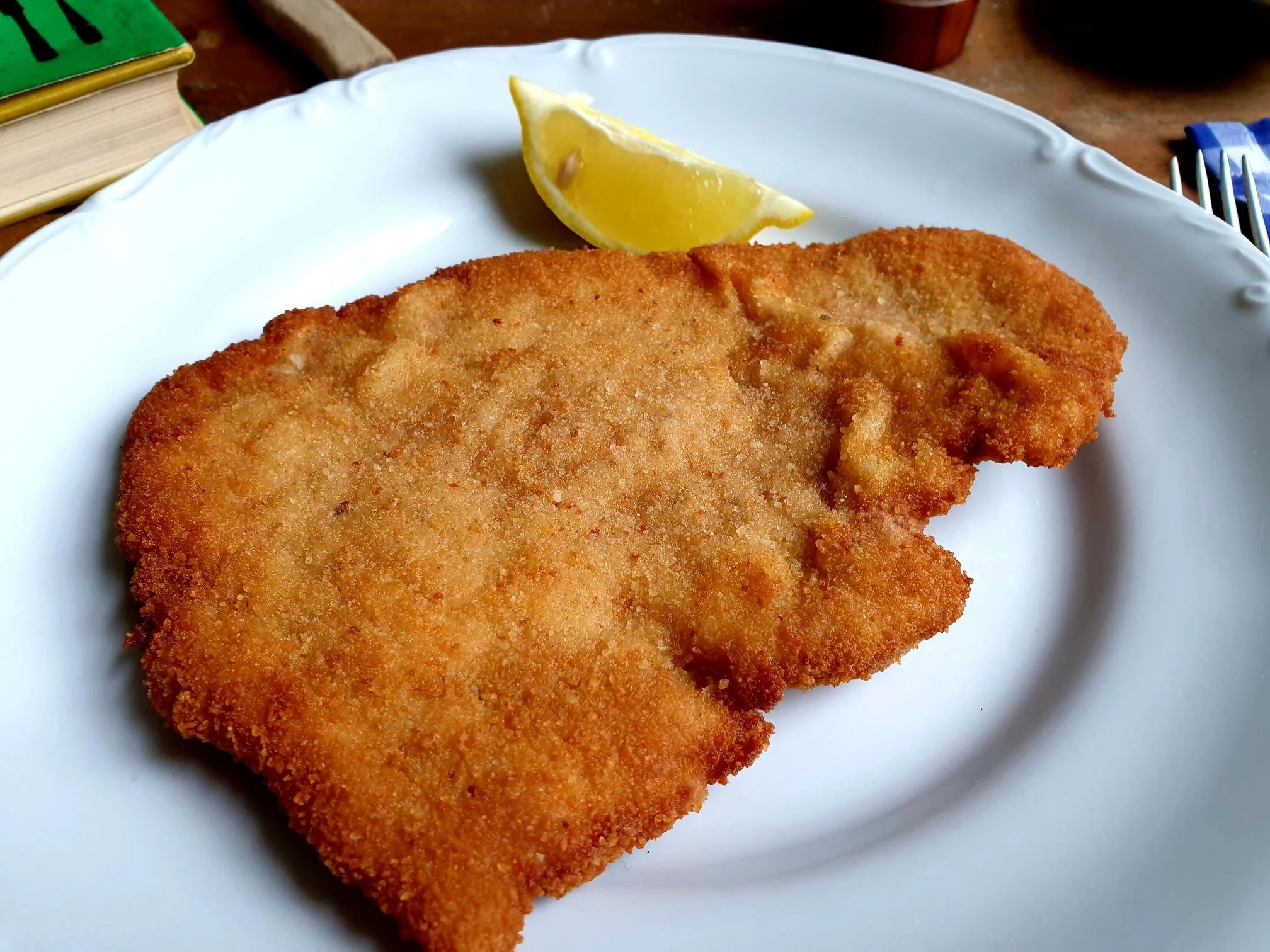Viennese Style Breaded Pork Escalopes Recipe
This dish from Vienna that has conquered the world is a total crowd pleaser, one of the most loved ones, and is an instant hit. It consists of dredging meat escalopes into a flour, then dipping them into whisked eggs, coating them in breadcrumbs and quickly shallow fried them until golden and crispy which makes them utterly scrumptious and irresistible.
Breaded meat escalopes are ideally eaten hot as soon as they are fried with some mashed potatoes, a seasonal salad, or Austrian style potato salad. They can also be served with boiled potatoes and some melted butter, and freshly chopped parsley, and a wedge of a lemon (optionally squeezed on escalope once fried). They are also incredibly delicious at the room temperature and offered as a part of a buffet, and they are also great used as as a filler in a sandwich (add a bit of fresh rocket salad and spread a slice of bread with a bit of mayonnaise, and you have a sandwich that is to die for).
This dish can be made ahead and stored which makes it a an ideal picnic food, and if you bring this dish with you on a picnic, you will stand out from the crowd, and there will be no chance of you bringing back home any leftovers...
This dish is typically found in the territories that once belonged to Austro-Hungarian Empire, including all the regions of Slovenia, where I come from, (referred to as Dunajski Zrezek or Pohani zrezek na dunajski način in standard Slovenian). This dish is so much adored that it is almost classed as a national dish. It is found on the menus in just about every restaurant and is prepared on a weekly basis in many households.
Breaded pork escalopes are also very strongly present among other imperial dishes in the neighbouring city of Trieste in Italy, and the surrounding areas where they are called by the locals Wiener Schnitzel (also spelled Wienerschnitzel, this is, however, a protected term by Austrian law and should be exclusively used when veal is used to make this dish). In the rest of the Italy this dish is known as Bistecca or Cotoletta alla Milanese, and this is where it could potentially get very confusing...
The origin of this gorgeous plate of food is very much disputed, it is believed that Wiener Schnitzel cames from Milan, in northern Italy, very close to Austria (it was part of the Habsburg Austrian Empire in the mid-nineteenth century). However, sometimes the credit for its creation goes to the Spaniards (Wiener Schnitzel was introduced by the Spanish Troops of Charles V to Vienna via Italy), and another fascinating theory suggests a Turkish origin of the dish.
I think I will not enter any more into this dispute regarding the origins of the best known speciality of Viennese cuisine, and one of the national dishes of Austria, and leave it to the expertise of culinary historians.
My mother has made this dish time and time again, the success and excitement are always guaranteed!
Recipe
Ingredients
Serves 4
4 pork escalopes, each weighing roughly 130g (for this recipe you can use different types and cuts of meat, chicken or turkey breasts and lamb cutlets for example work well)
all purpose (plain) flour, enough for coating about 100g
2 medium eggs, slightly beaten
dry breadcrumbs, enough for coating, about 100g
sea salt
black pepper, optional
1 lemon, cut in 4 wedges, optional, for serving
sunflower oil or other neutral tasting oil for frying
Method
Pound thoroughly the meat cutlets (not too thin) using the flat side of the meat mallet.
Season the meat on both sides with sea salt (and black pepper, optional).
Prepare three dishes for flour, eggs and breadcrumbs.
Put the flour in a wide shallow bowl, dish or on a large plate (I just use a piece of baking paper, fold it when I finish, and use it the next time).
Put the eggs in another shallow bowl or dish (big enough to accommodate the slice of meat) and whisk lightly.
Put the breadcrumbs in a third shallow bowl, dish or big plate.
Start the breading process.
Dredge each slice of meat into flour making sure everything is coated and gently shake off the excess.
Dip the floured slice of meat into a whisked egg, turn to coat, make sure all the sides are covered in egg, and let drip off any excessive egg.
Coat in breadcrumbs and press a bit so the breadcrumbs adhere well and shake off gently any excess breadcrumbs.
Repeat the process until you have used all the meat slices.
Pour the oil into a large frying pan, about 1cm, enough to cover the bottom of the pan and heat it over a medium heat (how much oil you need will depend on how big your frying pan is).
Once oil is hot, add breaded meat slices, one or two at the time without overcrowding the pan.
Fry roughly for about 2 minute on each side or until the breadcrumbs turn golden-brown in colour.
Transfer fried escalopes into a dish lined with kitchen paper to allow excess oil to be absorbed.
If the escalopes are lined in a layer, make sure you put a kitchen paper between every layer.
Just a thought
I have shared here the basic recipe for breaded pork escalopes, but if you wish to take this recipe up a notch, you can add some fresh finely chopped flat leaf parsley in whisked egg and some grated Parmiggiano Reggiano cheese or some dried herbs of your choice in the breadcrumbs.
You can store crispy breaded pork escalopes in an airtight container in the fridge for about two days.
This dish is not suitable for freezing.
If you wish to prepare this dish in advance, it is a good idea to store the uncooked and not fried breaded slices of pork in an airtight container in the fridge, and just before frying, “refresh” the breadcrumbs coating by covering the slices in breadcrumbs once again, this will give you a crunchy coating.
A vary tasty variation of this dish that is vegetarian friendly is using mushrooms, aubergines or courgettes instead of the meaty element.
Wine suggestion
Etna Nerello Mascalese DOC "Passorosso" 2020 - Passopisciaro


